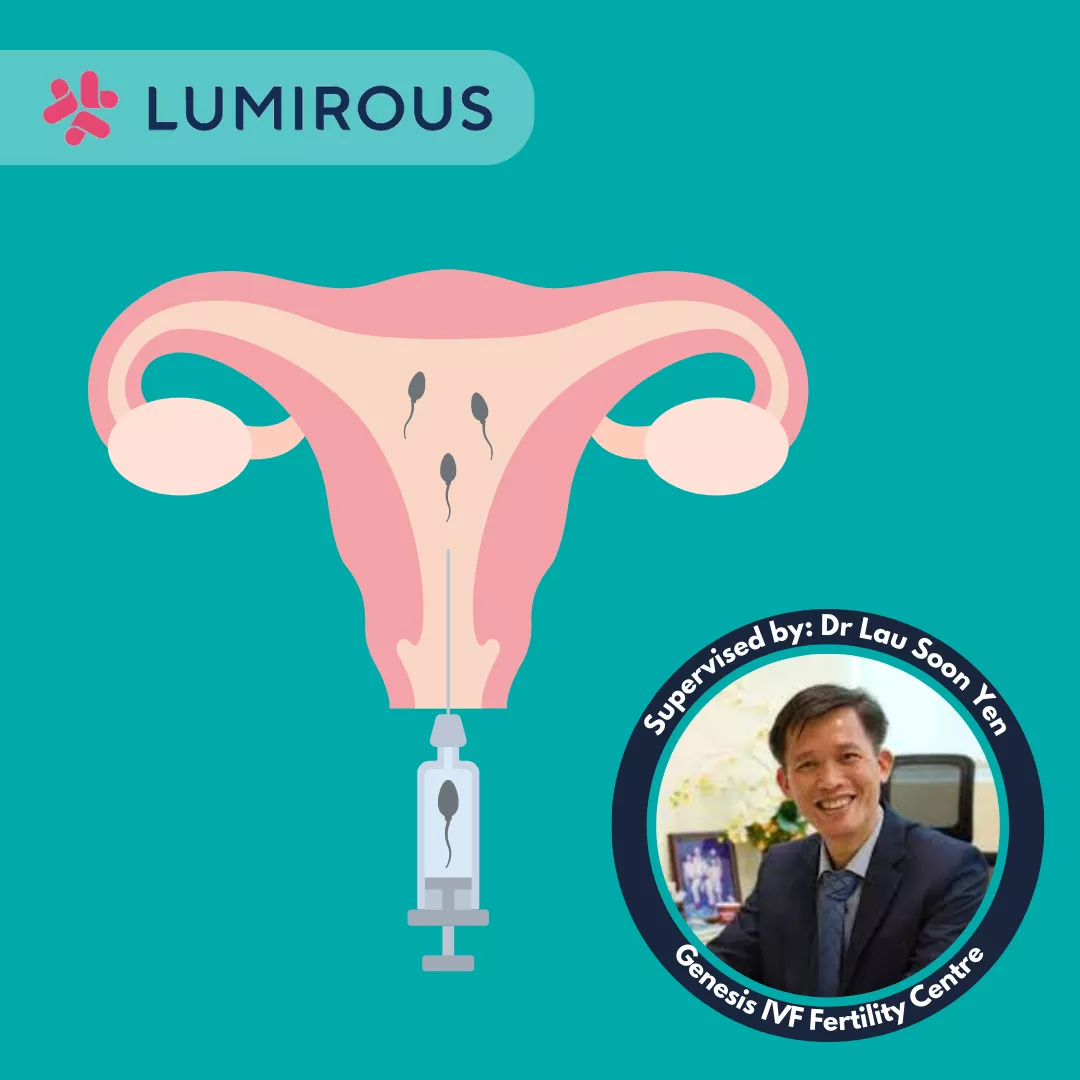Table of Contents

What is IUI?
Intrauterine insemination (IUI) is also best known as artificial insemination, it is a very common treatment procedure in Malaysia. In IUI treatment, fertility doctors will perform a transvaginal ultrasound (TVS) to check on the ovulation before placing the washed sperm directly into the uterus. The desired outcome from the IUI procedure in Malaysia is for the sperm to reach the waiting egg in the uterus for fertilization, thus, a pregnancy.
How Much Does an IUI Treatment Cost in Malaysia?
IUI treatment costs in Malaysia range from RM 1,000 to RM 5,000. This price range applies to both public and private fertility clinics.
Contact us for more information on the pricing and clinics that suits you best!
What is The IUI Treatment Success Rate?
The general success rate for IUI treatment is 10% to 15% each time. However, the success rate may vary depending on a few factors, such as the usage of fertility drugs, the cause of infertility and the couple's general health.
The main causes of IUI failure:
- Age factor- the progressing age will impact the quality of eggs or sperm produced.
- Poor quality of sperm, eggs, or both.
- Timing of the procedure.
- Endometriosis-related problems.
Who is Suitable to Undergo IUI Treatment?
IUI treatment is most suitable when the uterus is healthy, and there are no blockages in the fallopian tubes. Patent fallopian tubes and the timing of ovulation is prerequisite for IUI treatment.
Women
Subsequently, IUI is normally suggested for women with ovulation problems, endometriosis-related problems and unexplained infertility cases. This treatment is also suitable for women below 40 as the chances of pregnancy decrease with progressing age. Generally, older age groups with prolonged infertility are advised to opt for IVF treatment after detailed reassessment.
Men
For men, IUI is usually recommended when there are problems with the quantity of sperm produced (low sperm count) and issues in the quality of the sperm, especially regarding sperm concentration, motility (movements) and morphology (shape). Similarly, IUI would be advised for men below 40 as the progressing age will decrease sperm quality.
The Process of IUI
IUI treatment is a short procedure usually performed in the doctor's office or clinic. Below are the step-by-step strategies that you can expect to take place.
STEP 1
On your treatment day, the female patient will lie on the exam table with her legs on the stirrups.
STEP 2
Your doctor will start by inserting a speculum into the vagina.
STEP 3
A sperm sample in a vial will be attached to a catheter (thin tube).
STEP 4
The catheter will be inserted into the vagina, the cervix, and the uterus.
STEP 5
A sperm sample will be injected through the tube.
STEP 6
Your doctor will remove the catheter, followed by the speculum. End of procedure.
The IUI treatment is very common in Malaysia. Your visit to the clinic is no longer than 30 minutes while the procedure is done within 5 to 20 minutes. There is no need for an anesthetic as the patient is not expected to experience any pain besides slight discomfort during the insertion of the above medical tools.
What Are The Medications Used in IUI Treatment?
IUI treatment can be done during a natural ovulation cycle or a stimulated ovulation cycle. Hormonal medications will be prescribed in produced IUI through oral consumption (tablets) or human chorionic gonadotropin (hCG) injection. The medicine will function as a stimulator to ensure ovulation and increase the number of eggs produced. Usage of ovulation-inducing medication carries the side effect of multiple pregnancies — twins, triplets, or more.
What to prepare for before IUI treatment?
1. Preparing the semen sample
Your male partner provides a semen sample or a frozen piece at the doctor's office. The semen sample will be washed to secure only the high-quality model.
2. Ovulation monitoring
It can be done by using an over-the-counter ovulation test kit at home, performing a blood test, or using transvaginal ultrasound, which is recommended for accuracy. IUI treatment is best accomplished right after your ovulation cycle starts, around 12 to 16 days before your next menstrual cycle. Timing is crucial in IUI treatment as it can increase your chance of pregnancy.
Aside from the steps mentioned above, there are a few other preparations to consider before starting IUI treatment. Both public and private fertility clinics shall advise the couple seeking treatment to undergo pathology and fertility tests before planning for IUI. A pathology test detects underlying diseases or health conditions such as HIV and other sexually transmitted diseases (STDs). A fertility test could determine the cause of infertility, which can help your doctor devise the treatment plan that best suits you and your partner.
3. What can you do or avoid after IUI treatment?
IUI treatments usually don't cause any disruptions in your daily life. However, there are instances that you may experience cramps akin to menstrual cramps or slight bleeding. Your doctor will suggest taking it easy and lessening the vigorous physical activities such as aerobic exercises and heavy lifting.
Can you have sexual intercourse after IUI treatment?
The answer is yes. Your doctor might even encourage it as it can increase the chance of conception. However, you will be advised to wait at least 48 hours if bleeding occurs during the treatment.
Can you have sexual intercourse after getting pregnant?
The answer is yes. Pregnancy from IUI treatment is no different from natural conception pregnancy.
What alarm signs to look out for after IUI treatment?
When you are feeling pain, it is a sure sign that your body is letting you know that something is not right. The symptoms can come from abdominal pain, bloating, nausea, breathing difficulty, severe headaches, cramps or bleeding after the treatment. It is important to contact your healthcare provider when the symptoms arise immediately.
Need to know more about fertility treatment? Visit Lumirous.com or contact us now!
